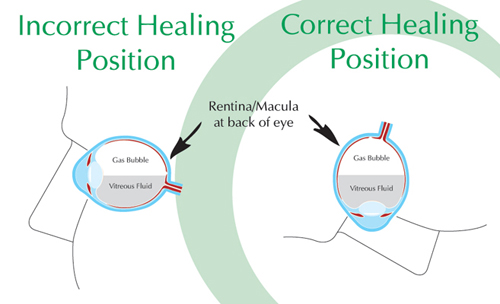Vitrectomy Surgery and Face-Down Positioning
Vitrectomy surgery is a general procedure used to treat a variety of eye conditions. These conditions may include natural degeneration of the vitreous humor, macular holes, macular pucker, vitreous bleeding, retinal detachment, or in some cases, injury. Although the reason for undergoing Vitrectomy surgery may vary from person to person, the procedure is largely universal.
The surgery involves the removal of the vitreous humor - a gel-like matrix comprising the bulk of the eyeball - through three small incisions. Since the vitreous humor provides the eyeball with structure, it must be replaced with a similar substance in order to prevent collapse. Where surgeries vary however, is in the mode surgeons employ to facilitate recovery.
One common surgical practice is the insertion of a gas bubble into the vitreous cavity at the end of the operation. The gas bubble acts as a surface to allow healing of the retina or macula, which is possible only if the person maintains the prescribed face down position.

In order to understand the purpose for this face-down position, one must first note the location of the macula on the inner rear portion of the eyeball. Because the gas bubble will always float to the highest region within the eye, the only way to ensure its contact with the macula is to orient the head in the face-down position.
The length of time that one remains in the face-down position is dependent on numerous factors related to both the nature of the disorder and the specifics of the surgery. This will be specified by the surgeon and can be anywhere from 1 to 3 weeks in duration.
